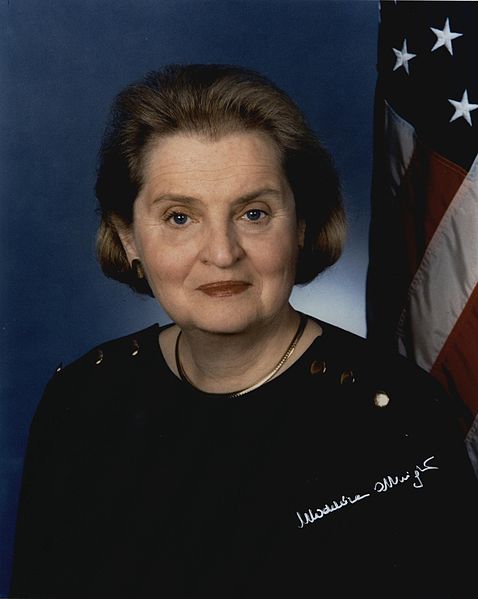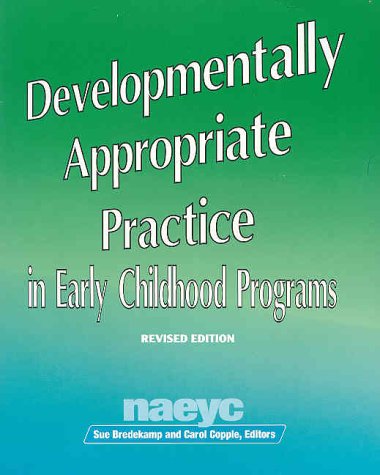This trio was in charge?
![By White House Official Site. Uploaded by Kmccoy. [Public domain], via Wikimedia Commons President Clinton waving during the state of the union (Newt Gingrich and Al Gore in background)](Images/Clinton1997SOTU.jpg)
Bill Clinton's State of the Union Speech
By White House Official Site. Uploaded by Kmccoy
Public domain, via Wikimedia
Commons.
Madeleine Albright was the first female Secretary of State?

By US Department of State
Public domain, via Wikimedia
Commons.
The first book in the Harry Potter series was released?
Teletubbies seemed to captivate young children but annoyed the heck out of any adult in earshot?
Mike Tyson took a bite out of Evander Holyfield’s ear?

By Octal @ flickr.com
Available under CCA-Share Alike
2.0 Generic Licence, via Wikimedia
Commons.
Steve Jobs looked like this and Microsoft bailed out Apple?
By Robert Holmgren, Available under CCA-Share Alike 3.0 Unported Licence, via Wikimedia Commons.
ER was the top show on TV and everyone was watching...
Friends
By gdcGraphics @ flickr.com |
Seinfeld
Derivate work by TheCuriousGenome, |
All the kids were playing with...
GameboysBy tanemori @ http://f.hatena.ne.jp/ |
Tamagotchies
|
Beanie Babies
|
The world mourned the loss of...
Princess Diana
|
Mother Theresa
|
and celebrated the wins of...
Tiger Woods
By PaddyBriggs @ en.wikipedia |
The Green Bay Packers By JL1Row, Available under CCA-Share Alike 3.0 License, via Wikimedia Commons |
The Miami MarlinsBy ScottRAnselmo @ en.wikipedia Available under CCA-Share Alike 3.0 License, via Wikimedia Commons |
and some of the best and worst movies were released?
- Titanic
- Good Will Hunting
- Flubber
- Scream
Eric Clapton and Baby Face won a Grammy for Change the World...
.jpg)
By Mario Sánchez @ flickr.com, Available under CCA-Share Alike 2.0 Generic License, via Wikimedia Commons
and NAEYC sought to change the world for young children with the 1997 revised position statement, Developmentally Appropriate Practice in Early Childhood Programs

Highlights from the 1997 Position Statement
In this assignment, you are asked to compare parts of the NAEYC 1997 and 2009 position statements on developmentally appropriate practice for young children ages birth through 8. These position statements can be found in the materials section of the “Start Here” page. The 1997 Position Statement was a revision to the original NAEYC Position Statement published in 1986. Many of the changes incorporated to the 1997 revison were in response to changes in American society at that time. Your assignment is to use the “Revisions Comparison Chart” to compare selected pages of the 1997 and 2009 documents, list key revisions and provide a rationale for why you think the changes were made.
Read only the parts of the position statements identified below-
1997 DAP Position Statement pp. 1-5 and 10-17 (You do not need to read the principles of child development and learning for this training.)
2009 DAP Position Statement pp. 1-10 and 16-24 (You do not need to read the principles of child development and learning for this training.)
To provide you with an example of what we are looking for, we have completed a comparison of the 1986 Position Statement to the 1997 revision. Use the blank Revision Comparison Chart to complete your assignment. Turn it in via the Assignment Dropbox as an attachment. Feel free to ask your facilitator for clarifications by using the Isidore Email.
REVISION COMPARISON CHART |
|
The 1997 edition includes the following revision: |
Rationale for or benefit of the change |
| It is more inclusive of cultural differences | One key area that was identified as problematic was the lack of understanding of cultural differences. Bias was found to exist in the 1986 edition because the specific needs of African-American children were overlooked and a Eurocentric perspective was emphasized. |
| It increased critical reflection by moving from an “either/or” to a “both/and” decision making framework | In response to criticism of the 1986 edition, the 1997 revision moved away from the “either/or” view of DAP. Instead of categorizing practice in absolutes as either appropriate or inappropriate practice, the 1997 edition incorporated a “both/and” framework of decision-making. This required that decisions about developmentally appropriate practice involved critical reflection versus a prescriptive list of absolutes. |
| It added five interrelated dimensions of early childhood practice | Recognizing that the field of early childhood is very complex and
there was a strong need to tear down the silos and blend the practice
of the birth to 5 Piagetian purist with the teacher directed and
hierarchical views of school age practitioners. These new dimensions
emphasized:
These dimensions opened the dialog to begin the debate and make meaning of controversial issues that faced the field such as:
|





